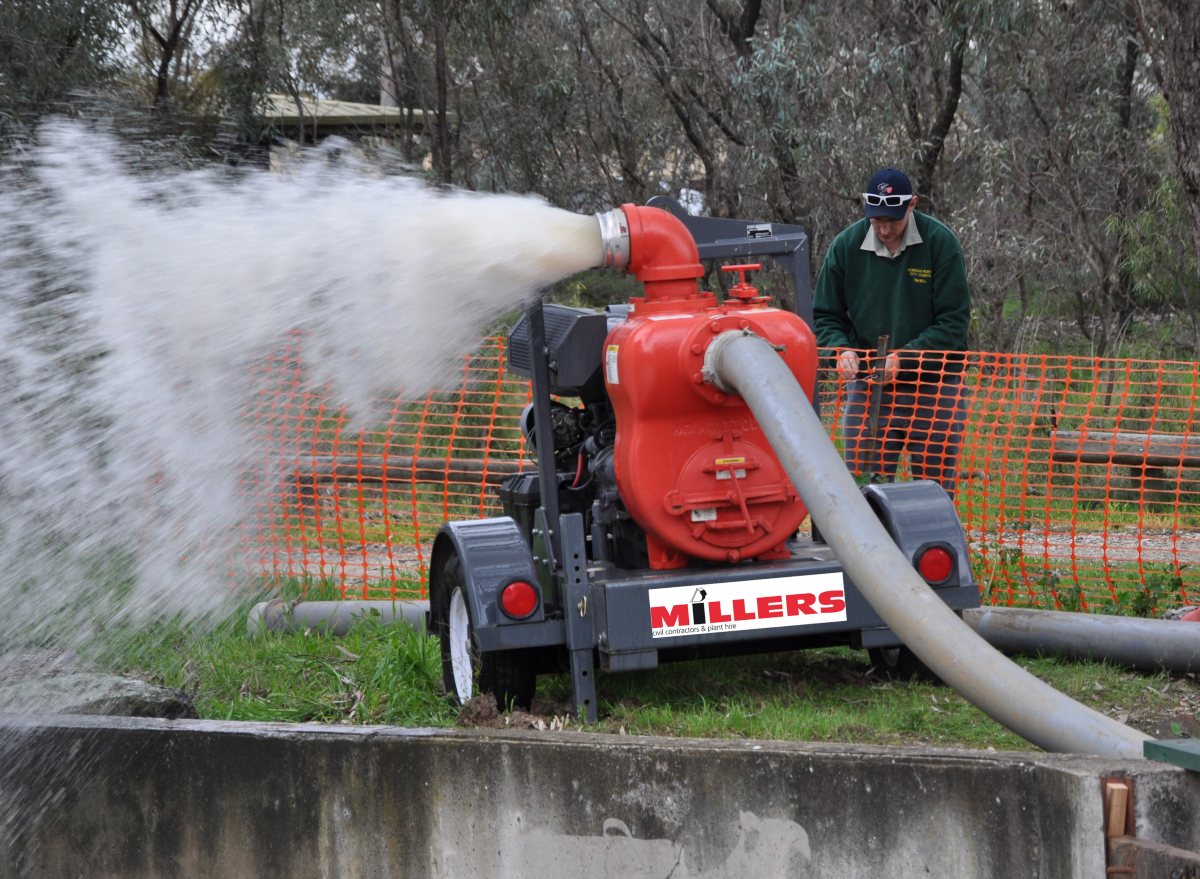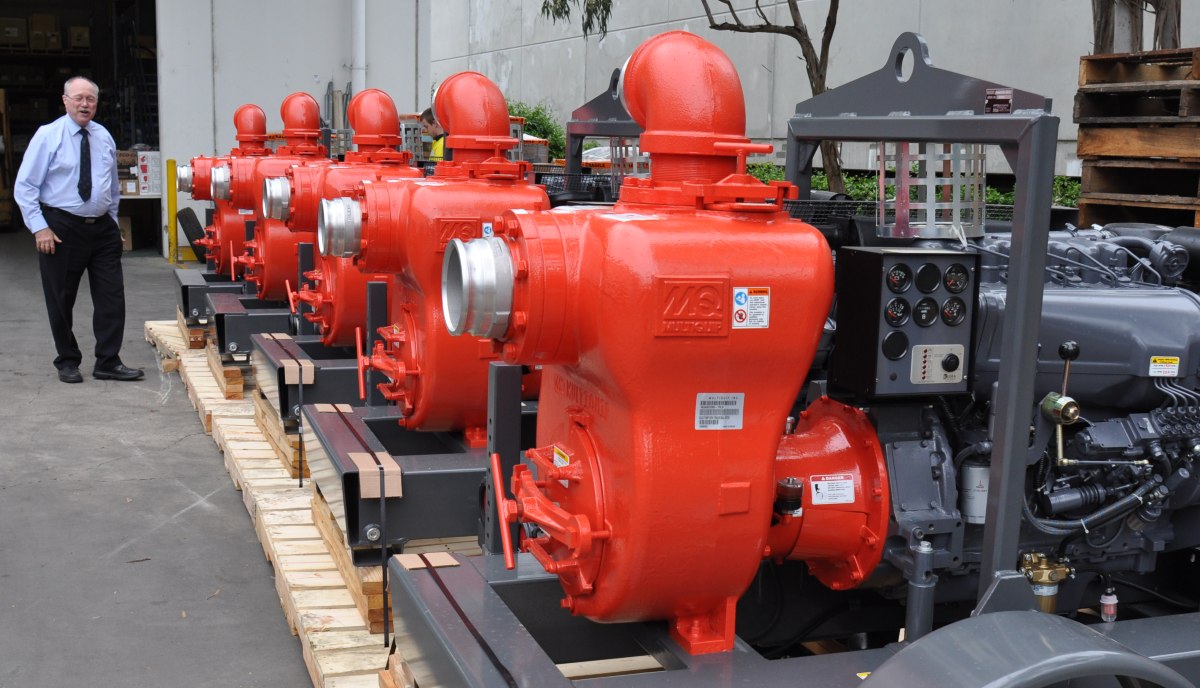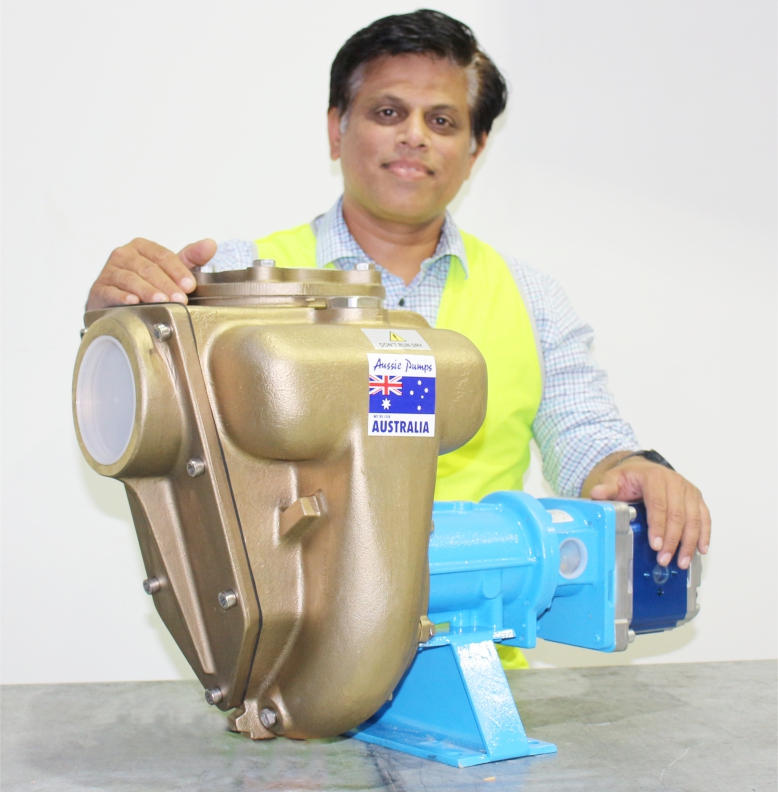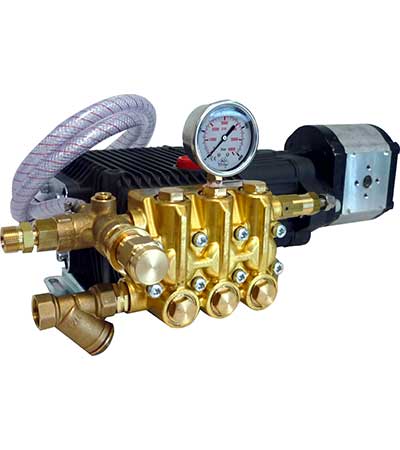DRY PRIME OR WET PRIME?
(This story appeared in Australian Earthmoving magazine)
Pumps play a massive role in the construction industry. They are indispensable in keeping quarries dry enough to operate! Imagine if concrete batch plants had to shut down every time a quarry was full of water after a cloud burst.
One Australian company, Australian Pump, has done a lot to develop wet prime pumps in what has traditionally been a dry prime pump application. Most dewatering applications involve some solids handling and the ability to move large amounts of potentially contaminated water.
When you need to move water fast most operators use diesel drive pumps. Nothing about that is new and dry prime pumps by companies like Pioneer, Sykes and Cornell have all played a major role in keeping sites dry and operational.
However, those dry prime pumps, with their essential priming devices, have their vulnerabilities. Vacuum or compressor assist have potential for breakdown, particularly with corrosive or silty water.
Australian Pump Industry started out developing a range of first world self-priming centrifugal trash pumps from 2” through to 4”. They realised that many of the dry prime pump applications could be better served by big simple self priming trash pumps.
Aussie Pumps’ Chief Engineer listened to Site Engineers and Quarry Operators about the real requirements of the job. “Basically, it was about reliability and moving lots of dirty water with no fuss or breakdowns” said John Hales.
THE SELF PRIMING PROCESS
What makes the Aussie Self Priming option so attractive, is the simplicity of the pump design.
That design includes a non-clog style, open impeller to handle slurry and solids. A huge tank is integrated into the pump’s body to hold the liquid required for priming. On the suction inlet a check valve stops the water in the pump from escaping once the pump is primed. There are three simple steps to follow.
- To prime the pump, the operator fills the pump body with water. It is held inside the body by the check valve in the suction port.
- When the operator starts the engine, the water in the body is expelled through the delivery port.
- The vacuum created within the pump bowl opens the check valve, and the water is drawn up through a suction line like drinking through a straw.
No mechanical priming aids are required.
The other major difference in design to dry prime pumps, is the front opening port. In the event of a choke this port can be used to access the pump internals to clear debris in a matter of minutes. There is no need to disconnect the suction or delivery hoses.
Although the company started out with 2” trash pumps, with the Honda petrol engines, they quickly moved to diesel’s and increased the range to 3” and 4” product.
“We still weren’t pumping water fast enough and had to move to a 6” pump winding up with a design for a pump that will move 6,000 lpm”, said Hales.
6″ TRASHIES
Called the MQ600TD, the big 6” pump, is powered by a 80hp Deutz air cooled diesel engine. It is built into the skid with a152 ltr fuel tank that permits 11 hours of continuous running.
The pump will draw water from a 7.6m vertical lift, without ancillary priming devices, produce a head of 46m, and can handle solids to 3”. For long, trouble free life, it is fitted with an oil lubricated tungsten titanium carbide seal. The shock mounted control panel, in a water resistant housing, includes an hour meter, ammeter, tachometer and alternator.
The unit also comes with an integrated lifting bar and a super heavy duty skid. It can be configured into a robust site trailer for easy movement where required.
“You get a lot of pump for the money, but all this capacity, including the big 80hp diesel, weighs in at just under a tonne” said Hales. The Deutz engine is fitted with engine protection and the Lofa DL240 controller. Low oil pressure, high oil temperature and v belt failure shutdown are all incorporated in the protection kit.
Major mines and quarries are moving to wet prime Aussie pumps, with the company now planning an 8” “Guzzler” that will move dirty water at up to 9,000 lpm!
Further information on the Aussie 6″ trash pumps






